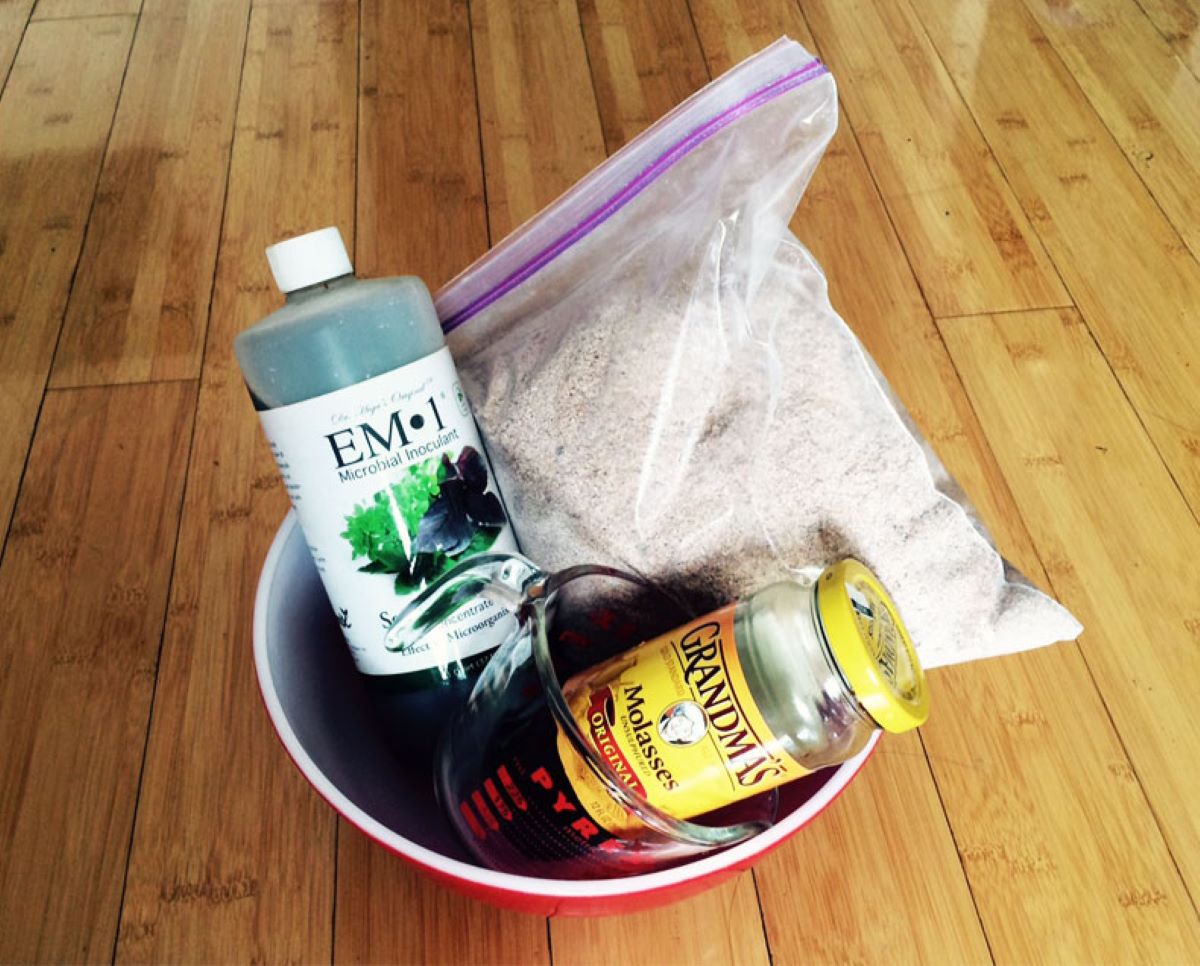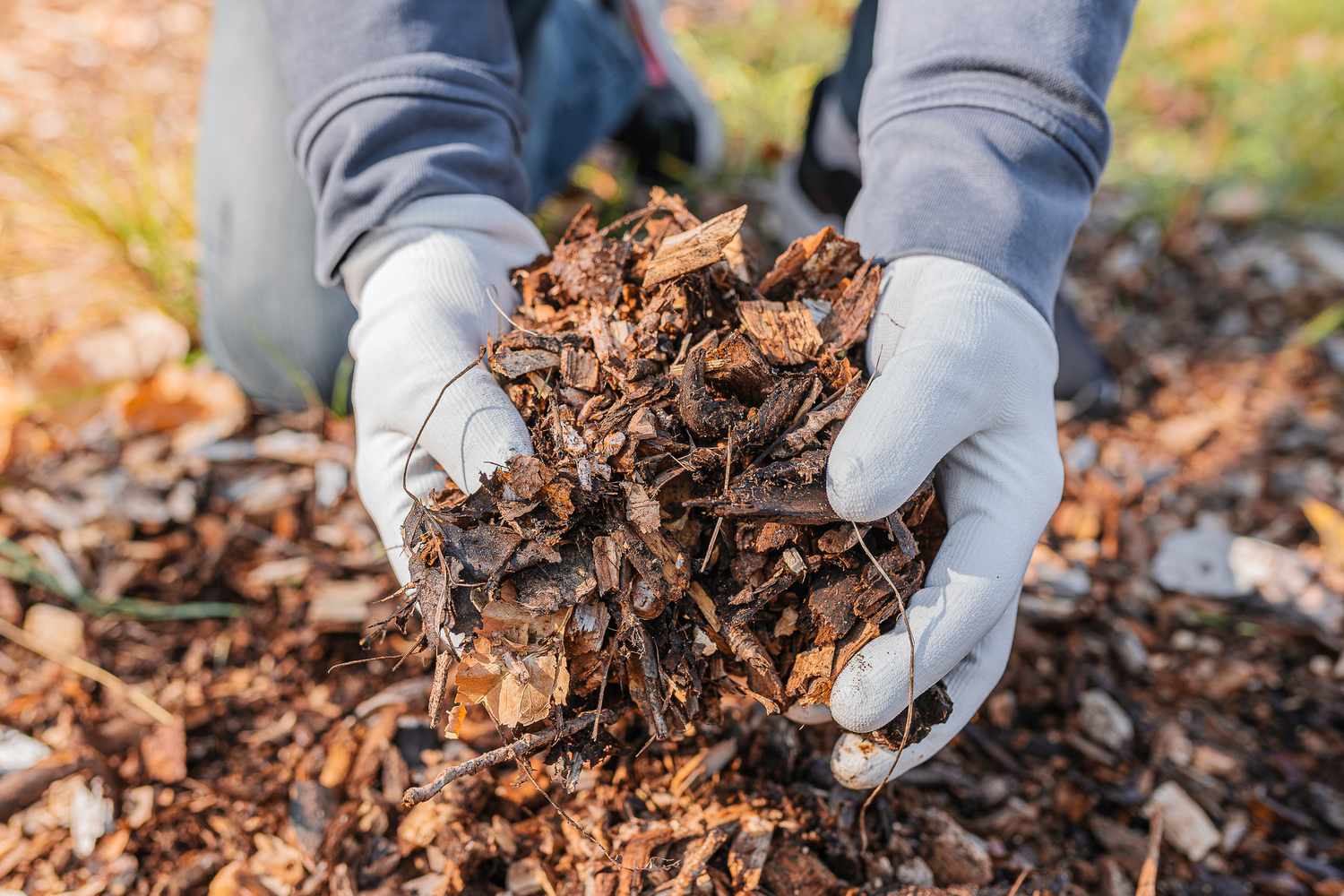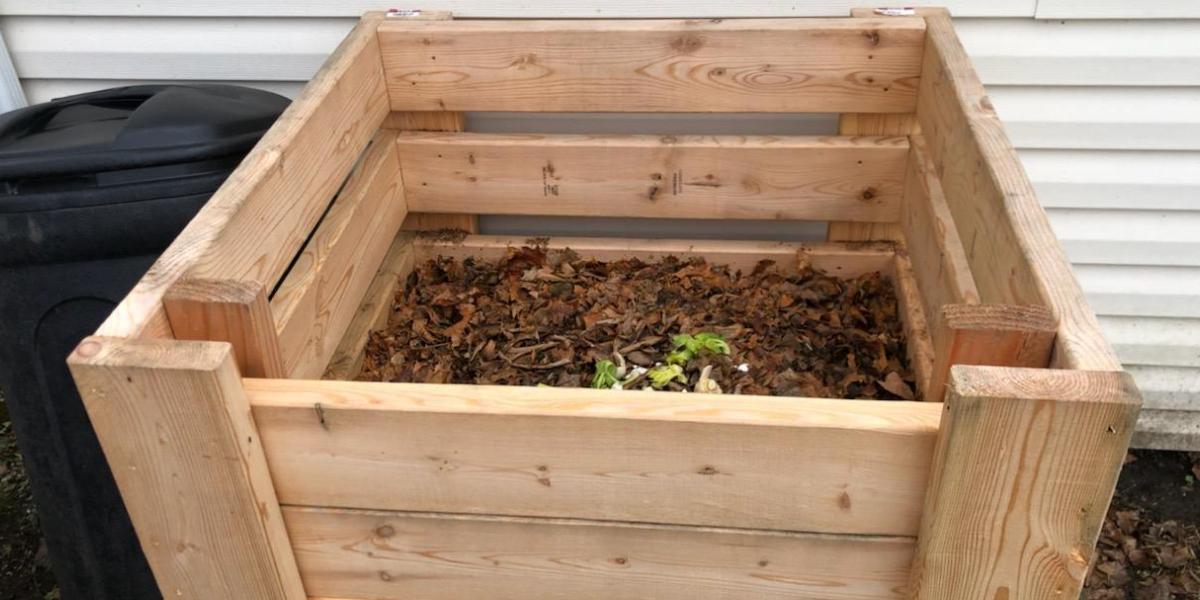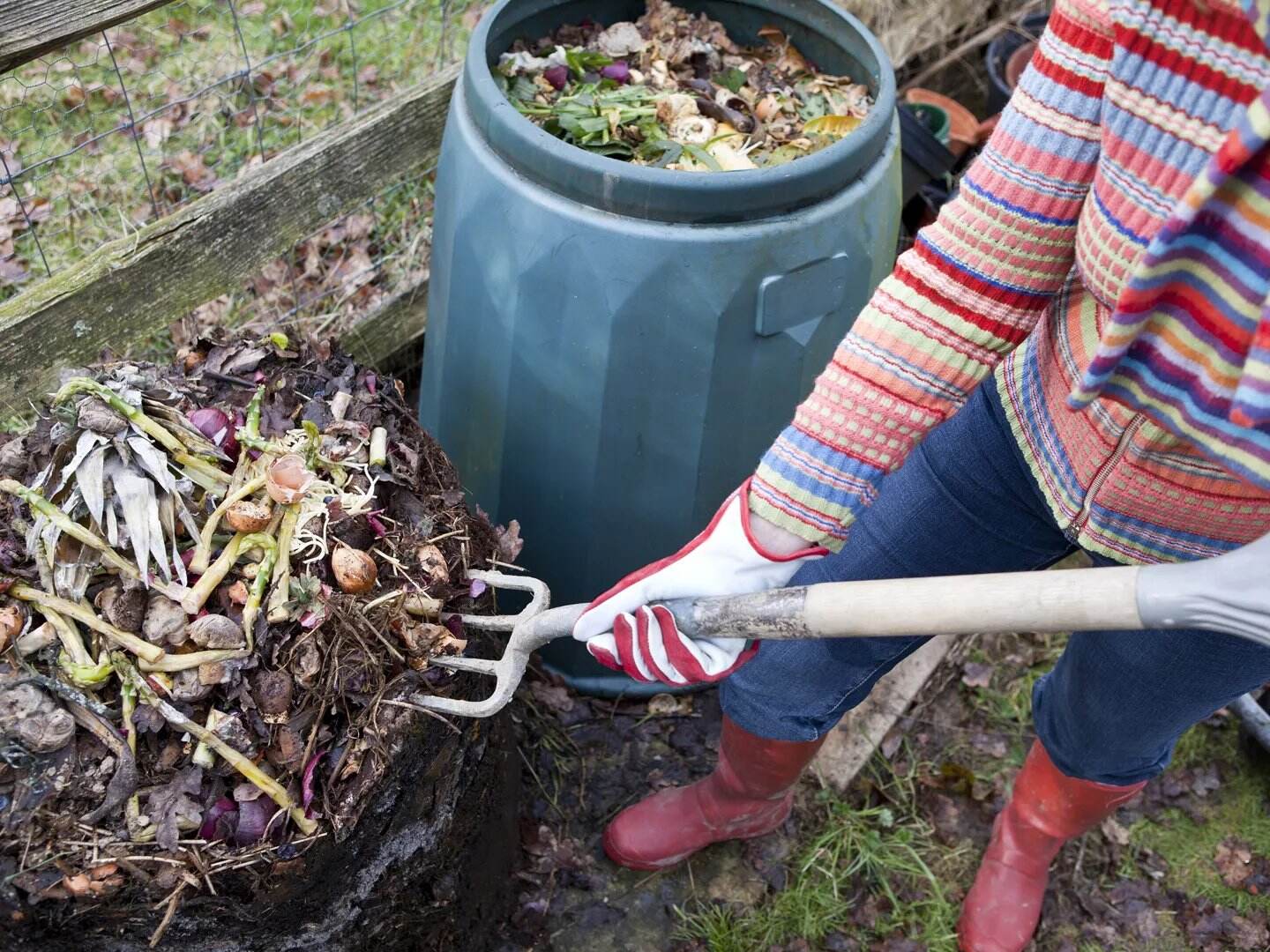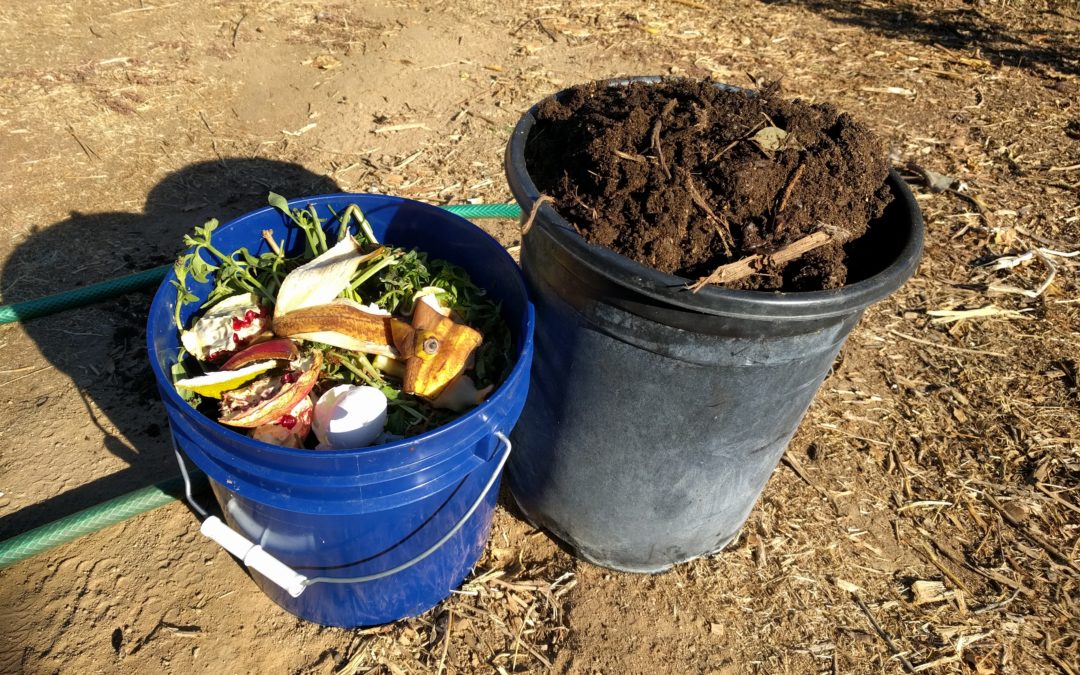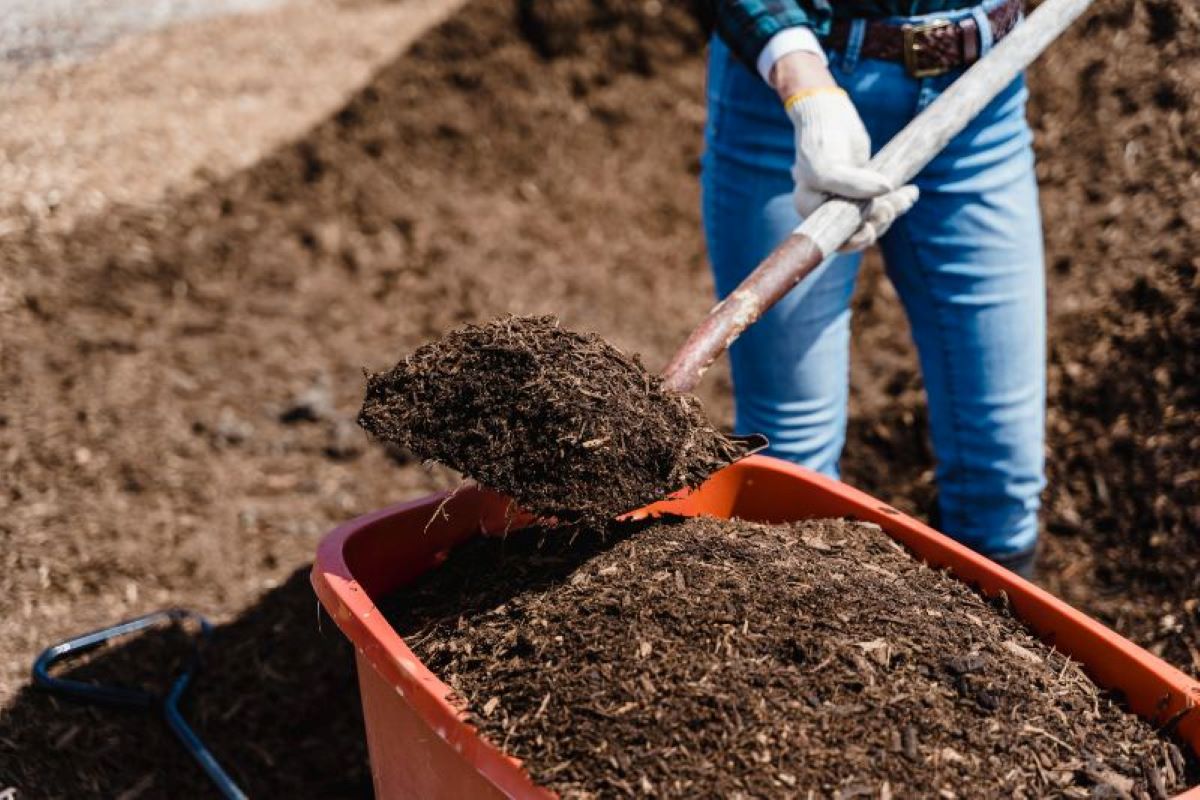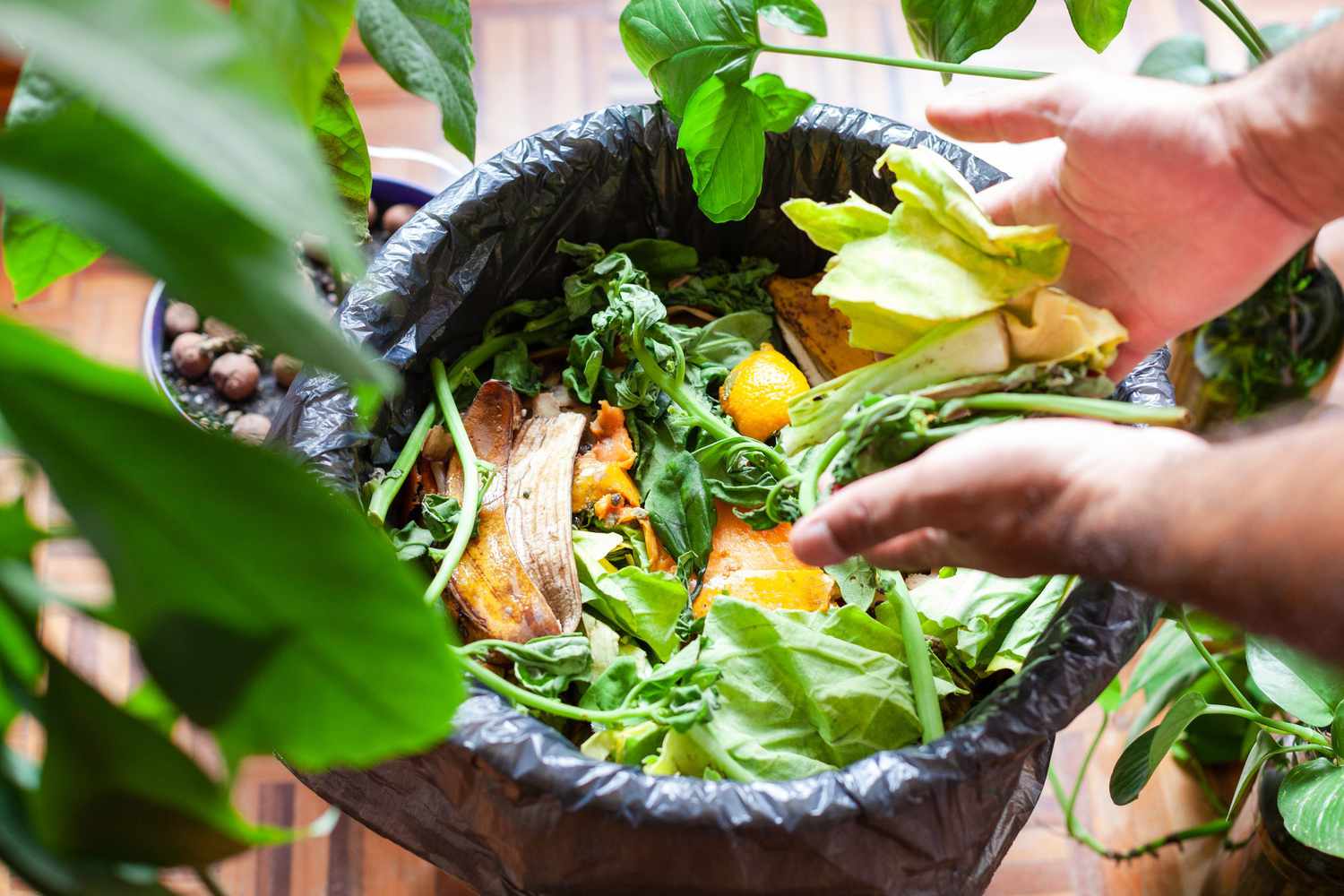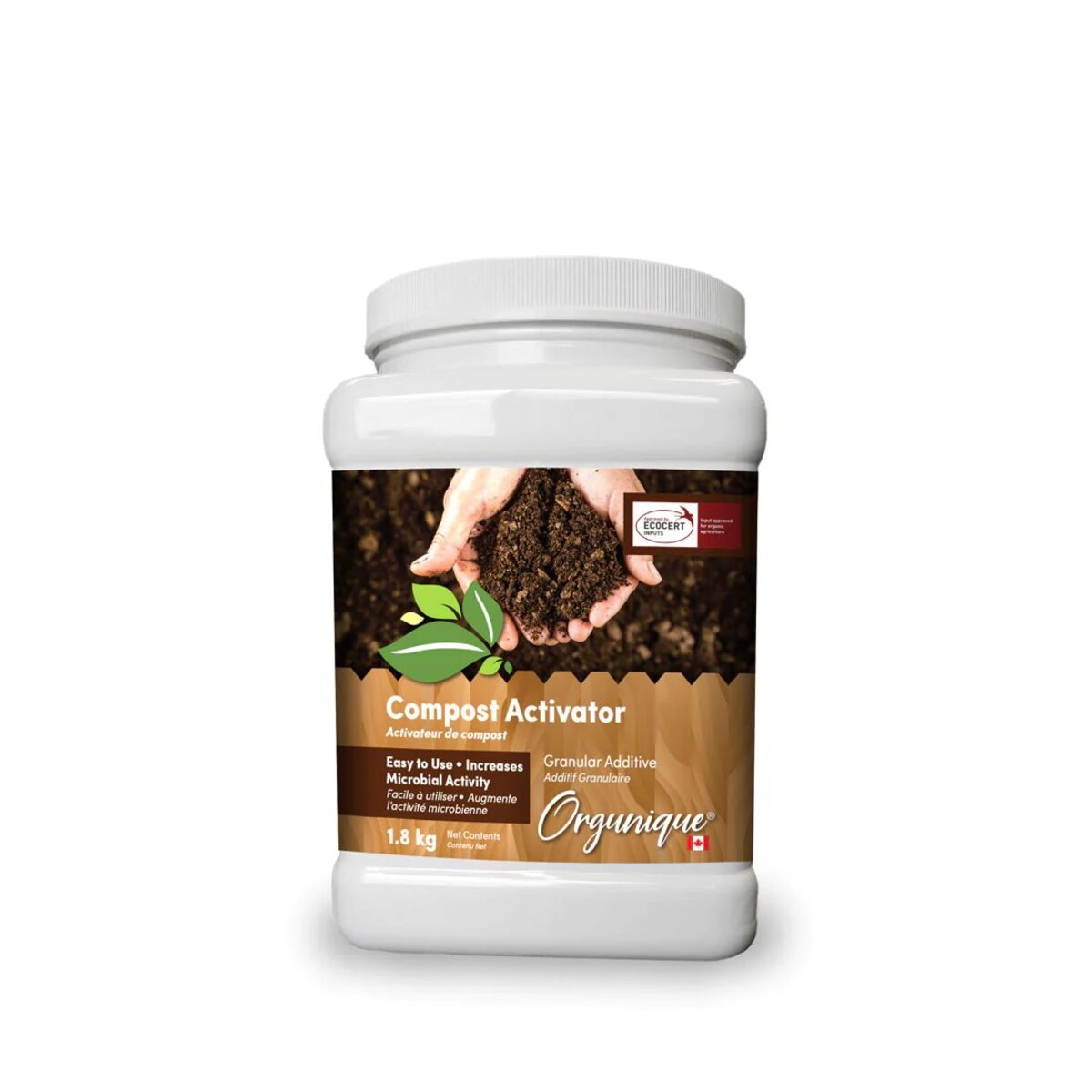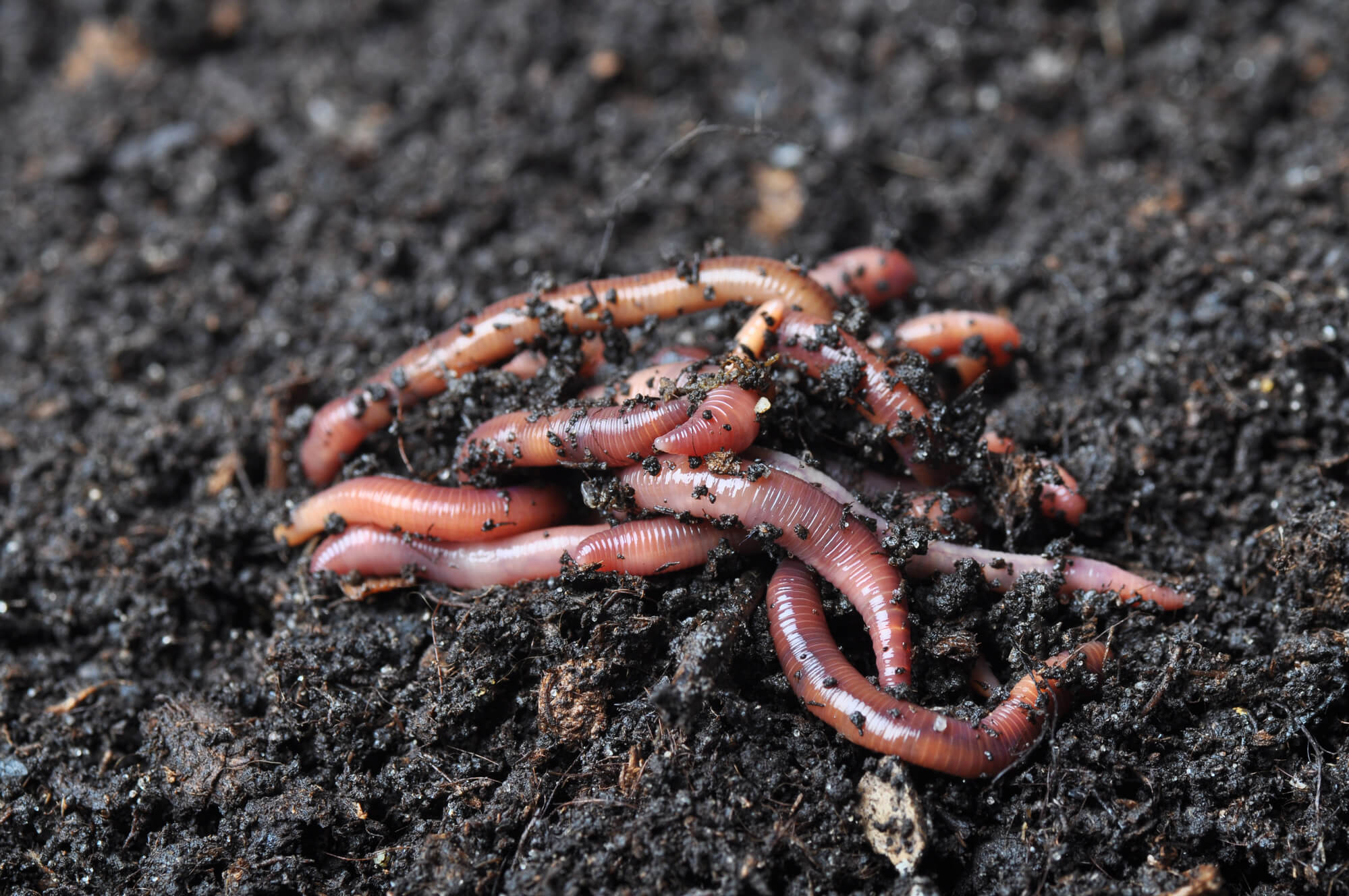Home>Gardening Techniques>DIY Projects>How To Make A Good Compost
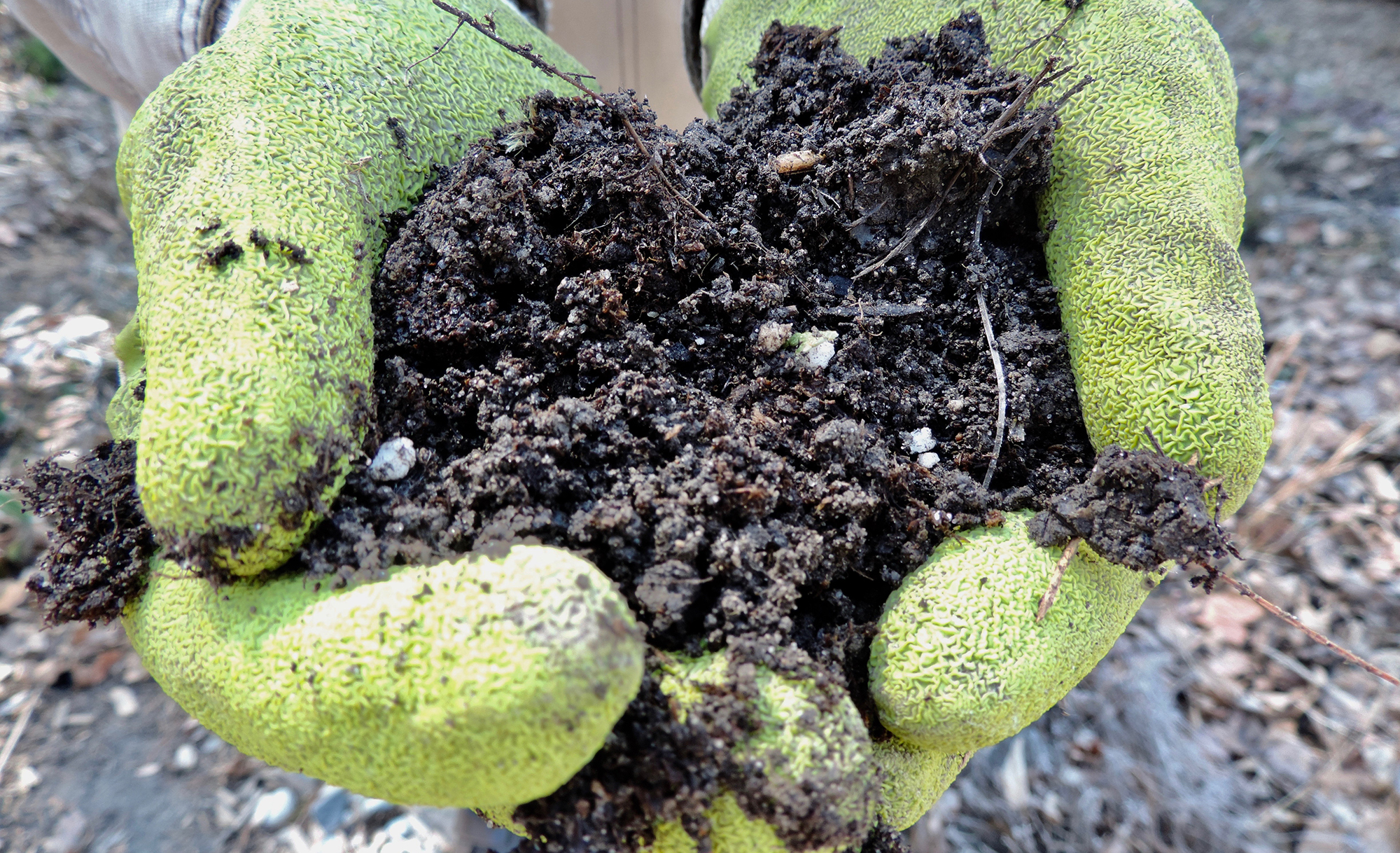

DIY Projects
How To Make A Good Compost
Modified: January 22, 2024
Learn how to make a good compost with easy DIY projects. Improve your garden while reducing waste. Start composting today!
(Many of the links in this article redirect to a specific reviewed product. Your purchase of these products through affiliate links helps to generate commission for Chicagolandgardening.com, at no extra cost. Learn more)
Table of Contents
Introduction
Welcome to the world of composting! If you’re looking to reduce waste, improve your garden’s soil health, and contribute to a more sustainable environment, then learning how to make a good compost is the perfect DIY project for you.
Composting is the process of decomposing organic materials, such as food scraps and yard waste, into nutrient-rich soil. It not only helps divert waste from landfills but also creates a valuable resource that can be used to enhance the health and productivity of your plants. Plus, it’s a great way to connect with nature and adopt a more eco-friendly lifestyle.
In this article, we will guide you through the steps of creating and maintaining a good compost pile. We will cover everything from the benefits of composting to troubleshooting common issues. Whether you’re a beginner or a seasoned gardener, you’re bound to find useful tips and insights to help you on your composting journey.
Before we dive into the nitty-gritty details, let’s take a moment to understand the many benefits that composting can offer.
Benefits of Composting
Composting offers a wide range of benefits for both individuals and the environment. Let’s explore some of the key advantages:
- Reduces Waste: Composting allows you to divert a significant amount of organic waste from ending up in landfills. This not only reduces the production of harmful greenhouse gases but also helps to minimize the need for landfill space.
- Improves Soil Health: Compost is often referred to as “black gold” because of its incredible ability to improve soil health. It adds valuable organic matter, increases nutrient levels, enhances soil structure, and promotes beneficial microbial activity. This, in turn, leads to healthier and more productive plants.
- Saves Money: By creating your own compost, you can significantly reduce the need for commercial fertilizers and soil amendments. This can result in substantial savings on gardening expenses in the long run.
- Conserves Water: Compost helps improve the water-holding capacity of the soil, reducing the need for frequent watering. It also aids in preventing soil erosion, allowing the soil to retain more moisture and making your garden more resilient during dry periods.
- Reduces Chemical Usage: Compost provides natural nutrients to your plants, reducing the reliance on synthetic fertilizers. This means you can minimize the use of potentially harmful chemicals in your garden, making it safer for you, your family, and the environment.
- Promotes Biodiversity: Healthy soil attracts a diverse range of beneficial organisms such as earthworms, insects, and microorganisms. These creatures play a crucial role in breaking down organic matter, improving soil structure, and controlling pests naturally.
- Creates a Sustainable Cycle: Composting completes the circle of life by returning organic waste back to the earth. It closes the loop by using food scraps and yard waste to create nutrient-rich soil, which can then be used to grow more food and plants.
These are just a few of the many benefits of composting. As you embark on your composting journey, you’ll discover even more reasons to embrace this eco-friendly practice.
Types of Composting Methods
When it comes to composting, there are several methods to choose from, each with its own benefits and considerations. Let’s take a look at some of the most common types of composting:
- Backyard Composting: This is the most popular and accessible method for home gardeners. It involves creating a compost pile or bin in your backyard using a mix of organic materials, such as kitchen scraps, yard waste, and plant trimmings. Backyard composting allows you to have control over the composting process and is suitable for small to medium-scale composting.
- Vermicomposting: Vermicomposting uses redworms (Eisenia fetida) to break down organic waste. These worms consume the waste and produce nutrient-rich castings, also known as worm castings or vermicast. Vermicomposting is an excellent option for those who have limited outdoor space or live in urban areas where traditional composting may not be feasible. It is a compact and efficient method that can be done indoors using a specialized worm bin.
- Bokashi Composting: Bokashi composting is an anaerobic fermentation process that involves fermenting kitchen scraps using a specific mixture of beneficial microbes. This method is great for those who want to compost food waste but don’t have access to outdoor space or don’t want to deal with typical composting odors. The fermented waste can then be buried in the soil or added to a traditional compost pile to complete the decomposition process.
- Compost Tumblers: Compost tumblers are rotating bins that make turning and aerating the compost much easier. These compact containers are ideal for small gardens or urban spaces where space may be limited. The tumbling action speeds up the decomposition process by providing regular aeration and mixing, resulting in faster compost production.
- Community Composting: Community composting programs are collaborative efforts where individuals come together to compost their organic waste in a shared composting facility. This method is especially beneficial for those who don’t have the space or resources to compost at home. It encourages community engagement, education, and the reduction of organic waste on a larger scale.
Choosing the right composting method depends on your specific circumstances, available space, time commitment, and personal preferences. Regardless of the method you choose, composting is a rewarding and sustainable practice that can benefit both you and the environment.
Materials for a Good Compost
Creating a successful compost pile requires the right mix of organic materials. These materials provide the necessary carbon and nitrogen ratios for decomposition to occur effectively. Here are some key components for a good compost:
- Brown Materials: Brown materials, also known as carbon-rich materials, provide the structural foundation of the compost pile. These include items such as fallen leaves, straw, hay, shredded newspaper, cardboard, and woody plant trimmings. Brown materials add bulk, improve aeration, and help balance the nitrogen content in the compost pile.
- Green Materials: Green materials, also known as nitrogen-rich materials, provide the necessary nutrients for microbial activity and decomposition. These include items such as kitchen scraps (vegetable and fruit peelings, coffee grounds, tea leaves), fresh grass clippings, garden trimmings, and manure from herbivores (like cows, horses, or rabbits). Green materials add moisture, heat, and nitrogen to the compost pile.
- Air and Water: Besides organic materials, composting requires the right balance of air and water. A well-aerated compost pile allows for the circulation of oxygen, which aids in the decomposition process. Turning the pile regularly or using a compost aerator can help maintain adequate airflow. Similarly, the compost pile should be kept moist, like a damp sponge, to facilitate microbial activity. Add water as needed to keep the moisture level optimal.
- Avoid: Certain materials should be kept out of the compost pile to prevent potential problems. Avoid adding meat, fish, dairy products, oily or fatty foods, pet waste, and diseased plant materials. These items can attract pests, emit unpleasant odors, or introduce harmful pathogens into your compost. Additionally, avoid using treated wood or plants treated with herbicides, as these chemicals can contaminate the compost.
- Optional Enhancements: While not essential, adding special ingredients can enhance the composting process. These include items like garden soil, compost starter, or finished compost, which introduce beneficial microorganisms and accelerate decomposition. Additionally, you can use agricultural lime to adjust pH levels if necessary.
Remember, achieving a good balance between brown and green materials is crucial for successful composting. Aim for a ratio of roughly 3 parts brown materials to 1 part green materials by volume. Adjusting the composition of your compost pile may require some experimentation and observation, but with time, you’ll develop a keen sense of what works best for your specific composting setup.
Creating the Compost Pile
Now that you have gathered your composting materials, it’s time to create the compost pile. Follow these steps to set up a successful composting system:
- Choose a Location: Select a suitable location for your compost pile. It should have good drainage, be easily accessible, and preferably situated in a partially shaded area. Avoid placing it too close to structures or trees that could hinder airflow or root penetration.
- Prepare the Base: Lay down a layer of twigs or straw at the bottom of the compost pile. This helps with aeration and drainage and prevents the pile from becoming waterlogged.
- Layer Your Materials: Begin by adding a layer of brown material, around 6 to 8 inches thick, on top of the base layer. Follow this with a layer of green material, around 2 to 3 inches thick. Continue layering brown and green materials, ensuring that the pile remains moist but not waterlogged. Avoid creating thick layers of any single material, as this can promote compaction and slow down decomposition.
- Add Water: Lightly moisten each layer as you build the compost pile. The moisture level should be similar to that of a damp sponge. Water helps facilitate decomposition by providing the necessary environment for microbial activity.
- Consider Turning: If you have enough materials, you can choose to build multiple compost piles. This allows you to turn the pile, which helps with aeration and accelerates decomposition. If you only have enough materials for one pile, you can still achieve aeration by inserting a compost aerator or garden fork into the pile regularly.
- Cover the Pile: Covering the compost pile with a tarp or compost cover helps retain moisture, prevent excessive drying out, and protect it from heavy rain. However, be sure to leave the sides exposed for airflow.
As the compost pile matures, it will naturally heat up and begin to decompose. This process can take anywhere from several weeks to several months, depending on various factors such as the materials used, weather conditions, and maintenance practices.
Remember to monitor the moisture level and periodically check the temperature of the compost pile. Ideally, the internal temperature should reach between 130°F and 160°F (54°C to 71°C) to ensure proper decomposition and kill off any weed seeds or harmful pathogens.
By following these steps and maintaining your compost pile, you’ll soon have a rich, dark, and crumbly compost that’s ready to be used in your garden.
Maintaining and Turning the Compost
To ensure proper decomposition and achieve high-quality compost, it’s important to maintain and turn the compost pile regularly. Follow these guidelines to effectively manage your compost:
- Monitor Moisture Levels: Check the moisture content of the compost pile regularly. It should feel moist, like a damp sponge. If it’s too dry, add water to increase the moisture level. If it’s too wet, add dry brown materials to improve aeration and prevent excessive moisture buildup.
- Aerate the Pile: Aeration is key to a healthy compost pile. Turning the pile every 1-2 weeks helps introduce oxygen, prevent anaerobic conditions, and enhance microbial activity. Use a garden fork, compost aerator, or a compost tumbler to turn and mix the materials thoroughly.
- Balance Green and Brown Materials: Maintain a balance between green and brown materials in the compost pile. Continue layering fresh green materials with dry brown materials. Adjust the ratio based on the moisture and decomposition rate of the pile. If the pile becomes too compact, add more brown materials to improve airflow.
- Chop or Shred Large Materials: To expedite the decomposition process, chop or shred large materials such as branches, stalks, or corn cobs into smaller pieces. This increases the surface area for microbial activity and speeds up decomposition.
- Avoid Adding Weed Seeds and Diseased Plants: Be cautious when adding weeds or diseased plant materials to the compost pile. While the high temperatures achieved in a well-maintained compost pile can kill many weed seeds and pathogens, it’s advised to avoid adding such materials to prevent any risk of spreading them in your garden.
- Manage Odors and Pests: Properly maintaining the compost pile will minimize odors and discourage pests. Avoid adding meat, fish, dairy products, or oily foods that can attract unwanted animals. Cover food scraps with a layer of brown materials to help reduce odors and prevent attracting flies or rodents.
- Consider Composting Bins: Using composting bins or enclosures can help contain the compost pile and prevent it from spreading or becoming a nuisance. Bins also provide a more organized composting system and make it easier to turn and manage the compost pile.
Remember that composting is an ongoing process that requires patience and attention. Throughout the composting journey, continue to monitor the pile, make adjustments as necessary, and be consistent with turning and maintaining it. With time, you’ll witness the transformation of your organic materials into a rich and nutrient-dense compost that is beneficial for your garden.
Monitoring and Troubleshooting
Monitoring the compost pile is essential to ensure that the decomposition process is progressing smoothly. It also helps identify and address any issues that may arise during composting. Here are some key aspects to monitor and common troubleshooting tips:
- Temperature: Regularly check the internal temperature of the compost pile using a compost thermometer. The temperature should ideally reach between 130°F and 160°F (54°C to 71°C) to activate microbial activity and accelerate decomposition. If the temperature is too low, the compost may not break down effectively. To increase the temperature, add more green materials or turn the pile more frequently.
- Odors: A well-maintained compost pile should have an earthy smell. Foul odors can indicate improper balance or excessive moisture. If the compost smells rotten or like ammonia, it may be too wet. Mix in dry brown materials such as leaves or shredded newspaper to absorb excess moisture and improve aeration.
- Pests: While composting can attract some insects, it’s important to control pests that may be harmful or disruptive. Avoid adding meat, fish, dairy products, or oily foods, as they may attract pests. To deter pests, cover food scraps with a layer of brown materials and make sure the compost pile is well-maintained with proper aeration and moisture control.
- Slow Decomposition: If the compost pile is not breaking down as expected, several factors may be contributing to the slow decomposition. It could be due to improper moisture levels, insufficient aeration, or an imbalanced ratio of green to brown materials. Adjust these factors accordingly to speed up the composting process.
- Weed Seeds: Despite the high temperatures achieved in a well-maintained compost pile, some weed seeds may survive. To minimize the risk of spreading weed seeds in your garden, avoid adding mature weeds with seed heads. If weed seeds do sprout in the compost, remove them before using the finished compost in your garden.
- Compost Maturity: Determining when your compost is ready for use can be subjective. However, finished compost is typically dark, crumbly, and earthy in texture. It should have a pleasant, soil-like smell. If there are still visible, recognizable materials in the compost, it may require more time to fully decompose. You can also perform the “sift test” by passing the compost through a mesh screen to separate any remaining uncomposted materials.
Keep in mind that composting is a dynamic process that may require adjustments along the way. Regular monitoring and troubleshooting will help ensure that your compost pile remains healthy and productive, resulting in nutrient-rich compost for your garden.
Using the Finished Compost
Congratulations! You have successfully converted organic waste into nutrient-rich compost. Now it’s time to reap the benefits and use the finished compost in your garden. Here are some ways to make the most of your compost:
- Soil Amendment: Incorporate the finished compost into your garden soil to improve its structure, fertility, and water-holding capacity. Dig or till the compost into the top layer of soil before planting. This helps provide a steady supply of nutrients to your plants and enhances overall soil health.
- Top Dressing: Use compost as a top dressing around established plants. Apply a thin layer of compost on the soil surface, taking care to avoid direct contact with plant stems. This acts as a mulch, helps retain moisture, and slowly releases nutrients into the soil over time.
- Potting Mix Component: Mix compost with potting soil in your container garden. The compost enriches the potting mix, improves its moisture retention, and promotes healthier plant growth. Aim for a compost to potting soil ratio of 1:3 or follow the specific recommendations for your plants.
- Compost Tea: Brew compost tea by steeping a bag or a handful of finished compost in water for several hours to extract the nutrients. Use the compost tea as a natural fertilizer by watering your plants with it. Compost tea provides a concentrated dose of nutrients and beneficial microorganisms, promoting stronger plant growth and disease resistance.
- Seed Starting: Create a nutrient-rich seed-starting mix by combining compost with a growing medium, such as coconut coir or vermiculite. The compost provides essential nutrients for seedlings, giving them a healthy head start.
- Amending Lawns: Use compost to amend bare patches or thin areas in your lawn. Spread a layer of compost and lightly rake it into the soil surface. The compost will improve soil structure, replenish nutrients, and enhance grass growth.
Remember to apply compost in moderation according to the specific needs of your plants. Start with a small quantity and gradually increase the amount as you observe how your plants respond. The goal is to provide a balanced nutrient supply without overwhelming the plants.
By utilizing the finished compost in various ways, you’ll nourish your plants naturally, improve soil fertility, and contribute to the overall health and productivity of your garden.
Conclusion
Congratulations on completing your crash course in composting! By learning how to make a good compost, you’ve taken a significant step towards reducing waste, improving soil health, and fostering a more sustainable lifestyle.
We explored the benefits of composting, including waste reduction, soil improvement, cost savings, water conservation, reduced chemical usage, and promotion of biodiversity. With composting, you contribute to a sustainable cycle that turns organic waste into nutrient-rich soil, creating a more harmonious relationship with nature.
We also examined different composting methods, such as backyard composting, vermicomposting, bokashi composting, compost tumblers, and community composting. Each method offers its own advantages and allows you to find a composting approach that suits your situation and preferences.
We discussed the importance of selecting the right materials for a good compost, including brown and green materials, air, water, while avoiding certain items like meat, fish, dairy products, and diseased plant materials.
Creating the compost pile involved choosing a suitable location, preparing the base, layering materials, and maintaining the right moisture levels. Regularly turning the pile and incorporating proper aeration were highlighted as crucial aspects of the composting process.
We emphasized the significance of monitoring and troubleshooting, including checking temperature, managing odors and pests, addressing slow decomposition, and handling weed seeds. Paying attention to these factors ensures that your compost pile remains healthy and productive.
Finally, we explored the various ways to use the finished compost, including soil amendment, top dressing, potting mix component, compost tea, and amending lawns. These methods allow you to maximize the benefits of your compost and nourish your plants naturally.
So, now it’s time to put your knowledge into action and start composting! Remember to be patient, observe, and adjust as necessary. With time and practice, you’ll become a composting pro, transforming waste into valuable soil enrichment for your garden.
Happy composting!
